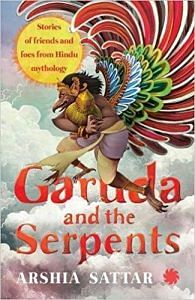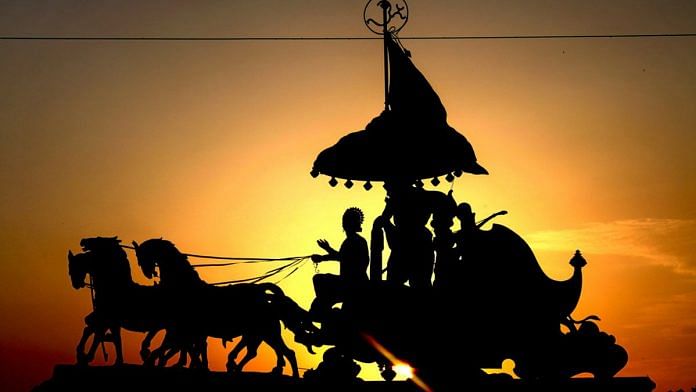Her wonderful writing and Ishan Trivedi’s colourful illustrations make ‘Garuda & the Serpents’ come alive for children as well as adults.
I haven’t read anything by Arshia Sattar quite like this. I have read her abridged translations of the Valmiki Ramayana and the Kathasaritsagara. But those are not exactly of this genre. The target audience was different.
‘Garuda and the Serpents’ is a wonderfully written collection. It isn’t just for children; it is for anyone who wants to go beyond Amar Chitra Katha and television versions of mythological stories.
It’s the storytelling that stands out more than anything else in this book. Take for instance, the opening lines from the first story — ‘The churning of the ocean’:
“One day, the sage Durvasas, who is known for his bad temper, saw Indra, king of the gods, going by on an elephant. As it happened, Durvasas was in a mellow mood and he gave Indra a garland of beautiful flowers. Indra did not think much of it and hung the garland around the neck of the elephant he was riding. The elephant was uncomfortable. He pulled off the garland with his trunk and tossed it on the ground.”
The reader is immediately interested; his/her attention has been grabbed — ‘What happened next?’ That’s the hallmark of an excellent storyteller.
The last few lines from the last story, about Mahishasura, offer a sense of happy ending. “When Mahishasura fell, there was a great tumult. The asuras ran from the battlefield, shrieking and wailing, and they headed straight for the underworld where they would remain for eons. At the same moment, the gods broke into cries of joy, shouting ‘Victory! Victory!’ and the goddess’s triumphant laughter danced and echoed throughout the three worlds.”
There are 18 tales in this collection that are labelled as “stories of friends and foes from Hindu mythology”. I wonder whether choosing 18 stories had something to do, at least sub-consciously, with there being 18 Puranas. Understandably and consciously, the author reveals a partiality towards the Ramayana. While deciding on a collection like this, the most difficult question is often about which stories should be included in it.
For example, one can think of other stories that might have been included – Harishchandra, more than one about Ganesha, Daksha’s sacrifice, Kartikeya’s birth, Manu and the fish, and so on. However, this is not a criticism. It is reasonable to expect there will be more volumes in this series.
For anyone with a cursory degree of familiarity with Hindu mythology, 15 out of the 18 should immediately ring a bell. The three that might not are the magic cow, the cursed immortal and King Ila. But, if instead of magic cow, I told you this story about the enmity between Vishwamitra and Vasishtha, the recognition will probably be immediate. The cursed immortal is Ashwatthama and except for people who have really read the Mahabharata in detail, I don’t think this story is that familiar. The Ila story is perhaps the most unfamiliar of all.
Broadly, the Puranas have stories about Brahma (creation and so forth), Vishnu (usually about the avataras) and Shiva. It is perhaps fair to say there are more relatively unfamiliar stories associated with Shiva and his family. In the expected next volume, I think those should be the focus. Alternatively, perhaps one should have a mix of familiar stories and the relatively unfamiliar ones.
I also wonder whether an introduction might have been a good idea. For instance, Ashwatthama is an immortal. There are seven/eight immortals and we have two of them (Ashwatthama and Hanuman) in this collection. Might it not be a good idea to let children (or adults) know there are seven/eight immortals and that the others are Markandeya, Vedavyasa, Kripacharya, Vibhishana, Parashurama and Bali (not to be confused with Vali)? And how does one convey such information, except through an introduction?
Nevertheless, this is a wonderfully written book. I must also mention that Ishan Trivedi’s illustrations make the stories come alive. There are Garuda running away with the pot of amrita on the front cover and Trishanku falling from heaven on the back cover. But there are many more illustrations inside, equally colourful and attractive.
 Bibek Debroy is an economist and a member of NITI Aayog.
Bibek Debroy is an economist and a member of NITI Aayog.



